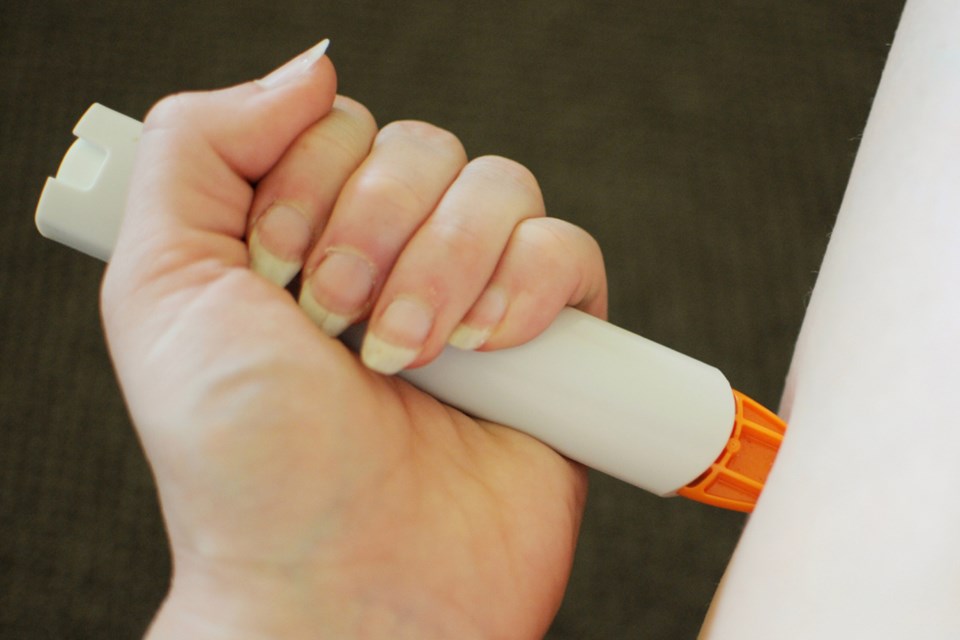Health
Urgent Medical Advice on EpiPen Use for Anaphylaxis Management

A recent article published in the Canadian Medical Association Journal (CMAJ) underscores the critical role of epinephrine in treating anaphylaxis, a severe allergic reaction that can be life-threatening. The publication emphasizes that epinephrine is the only treatment that can effectively prevent death in such cases. It is typically delivered through an auto-injector, commonly known as an epi-pen, which administers the medication directly into the thigh muscle.
The article highlights that “intramuscular epinephrine rapidly reverses airway edema and shock,” marking it as the preferred option in emergencies. Current medical evidence does not support the use of antihistamines or corticosteroids as effective alternatives for preventing the progression of anaphylaxis or biphasic reactions. Thus, these medications should not delay the administration of epinephrine.
Anaphylaxis is often triggered by foods such as peanuts, tree nuts, milk, eggs, fish, shellfish, and sesame seeds. The article also discusses the use of second-generation antihistamines, which are frequently employed alongside first-generation options to manage allergic reactions due to their effectiveness and reduced side effects, such as drowsiness.
According to Health Canada, approximately 600,000 Canadians are at risk of life-threatening allergic reactions, a number that is on the rise, particularly among children. Despite the availability of epinephrine auto-injectors, some patients hesitate to use this needle-based treatment. In response to this concern, a new intranasal epinephrine spray has been proposed as a potential alternative.
While intranasal epinephrine has received approval in the United States, it is currently under review in Canada. The article states that this formulation could be particularly beneficial for those with needle phobia or other limitations. As of November 2025, the nasal spray remains awaiting approval as a needle-free solution for patients aged four years and older who weigh at least 15 kilograms.
The recommendations for emergency medical services (EMS) following the use of epinephrine vary. A 2023 practice parameter update advises that home observation may be appropriate if symptoms completely resolve within 10 to 15 minutes after administering a single dose of epinephrine, provided the patient has immediate access to a second dose and emergency medical care. Conversely, guidance from the Canadian Paediatric Society in 2018 recommends that all children treated with epinephrine should be evaluated in an emergency department.
The CMAJ article asserts that auto-injectors should be prescribed to all patients with a history of anaphylaxis, including those who may experience less severe allergic reactions or possess risk factors such as mast cell disorders or uncontrolled asthma. Additionally, individuals living more than 30 minutes away from EMS response or hospital transport should also carry self-injectable epinephrine.
For those interested, the full text of the article is available online, providing further insights into the critical management of anaphylaxis and the implications for public health.
-

 Politics1 week ago
Politics1 week agoSecwepemc First Nation Seeks Aboriginal Title Over Kamloops Area
-

 World4 months ago
World4 months agoScientists Unearth Ancient Antarctic Ice to Unlock Climate Secrets
-

 Entertainment4 months ago
Entertainment4 months agoTrump and McCormick to Announce $70 Billion Energy Investments
-

 Lifestyle4 months ago
Lifestyle4 months agoTransLink Launches Food Truck Program to Boost Revenue in Vancouver
-

 Science4 months ago
Science4 months agoFour Astronauts Return to Earth After International Space Station Mission
-

 Technology3 months ago
Technology3 months agoApple Notes Enhances Functionality with Markdown Support in macOS 26
-

 Top Stories1 month ago
Top Stories1 month agoUrgent Update: Fatal Crash on Highway 99 Claims Life of Pitt Meadows Man
-

 Sports4 months ago
Sports4 months agoSearch Underway for Missing Hunter Amid Hokkaido Bear Emergency
-

 Politics3 months ago
Politics3 months agoUkrainian Tennis Star Elina Svitolina Faces Death Threats Online
-

 Politics4 months ago
Politics4 months agoCarney Engages First Nations Leaders at Development Law Summit
-

 Technology4 months ago
Technology4 months agoFrosthaven Launches Early Access on July 31, 2025
-

 Top Stories3 weeks ago
Top Stories3 weeks agoFamily Remembers Beverley Rowbotham 25 Years After Murder















